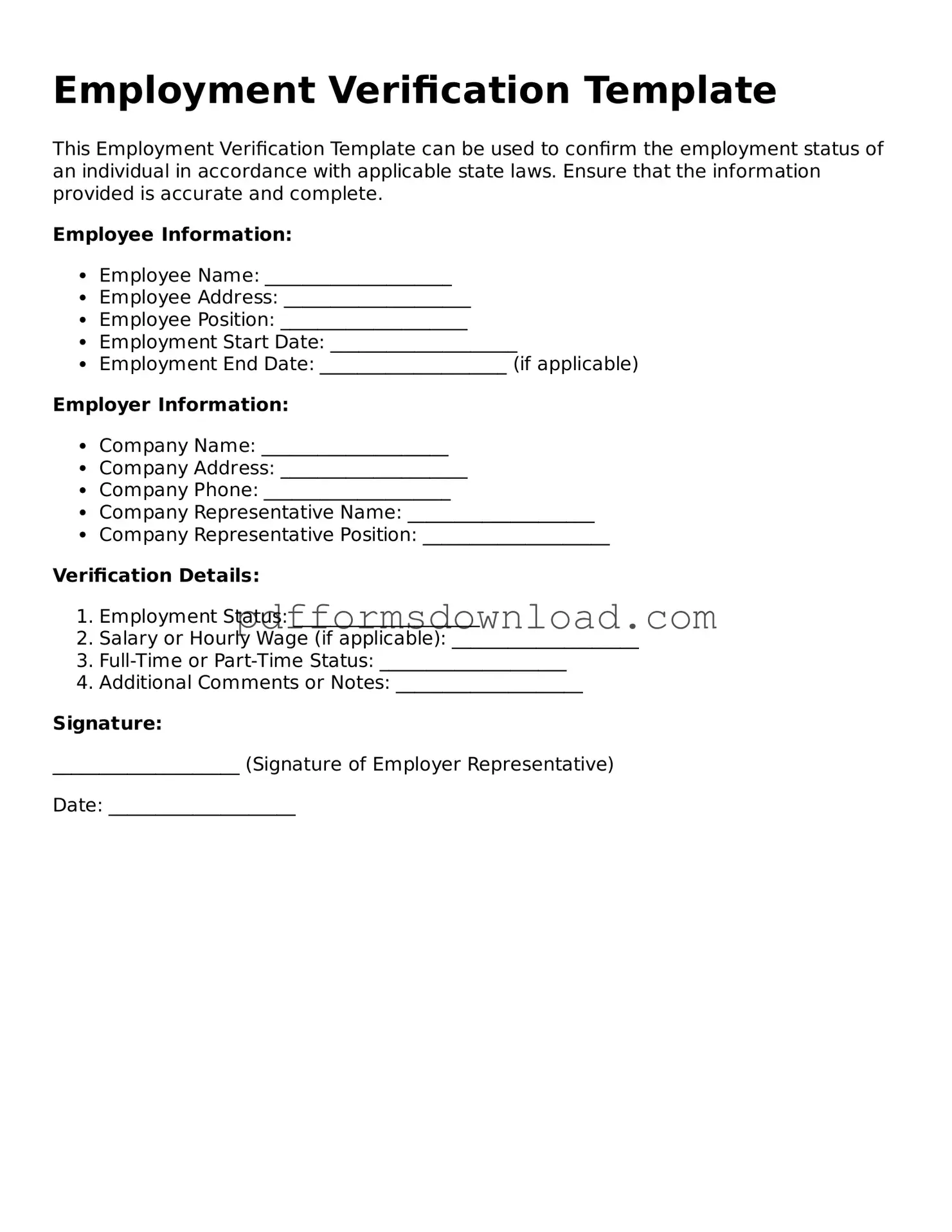Official Employment Verification Document
The Employment Verification form is a document used by employers to confirm an employee's job status, salary, and other employment details. This form plays a crucial role in various situations, such as loan applications or background checks. To ensure a smooth verification process, fill out the form by clicking the button below.
Make This Document Now
